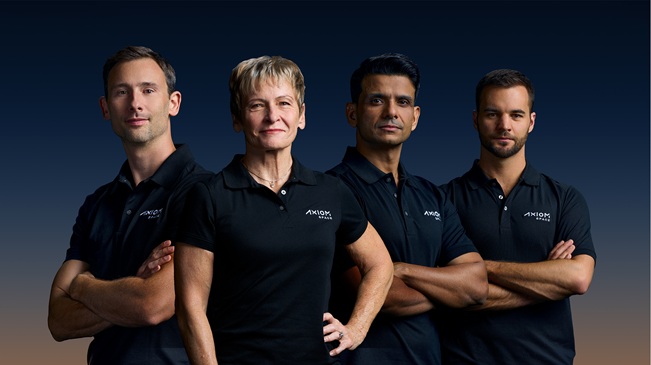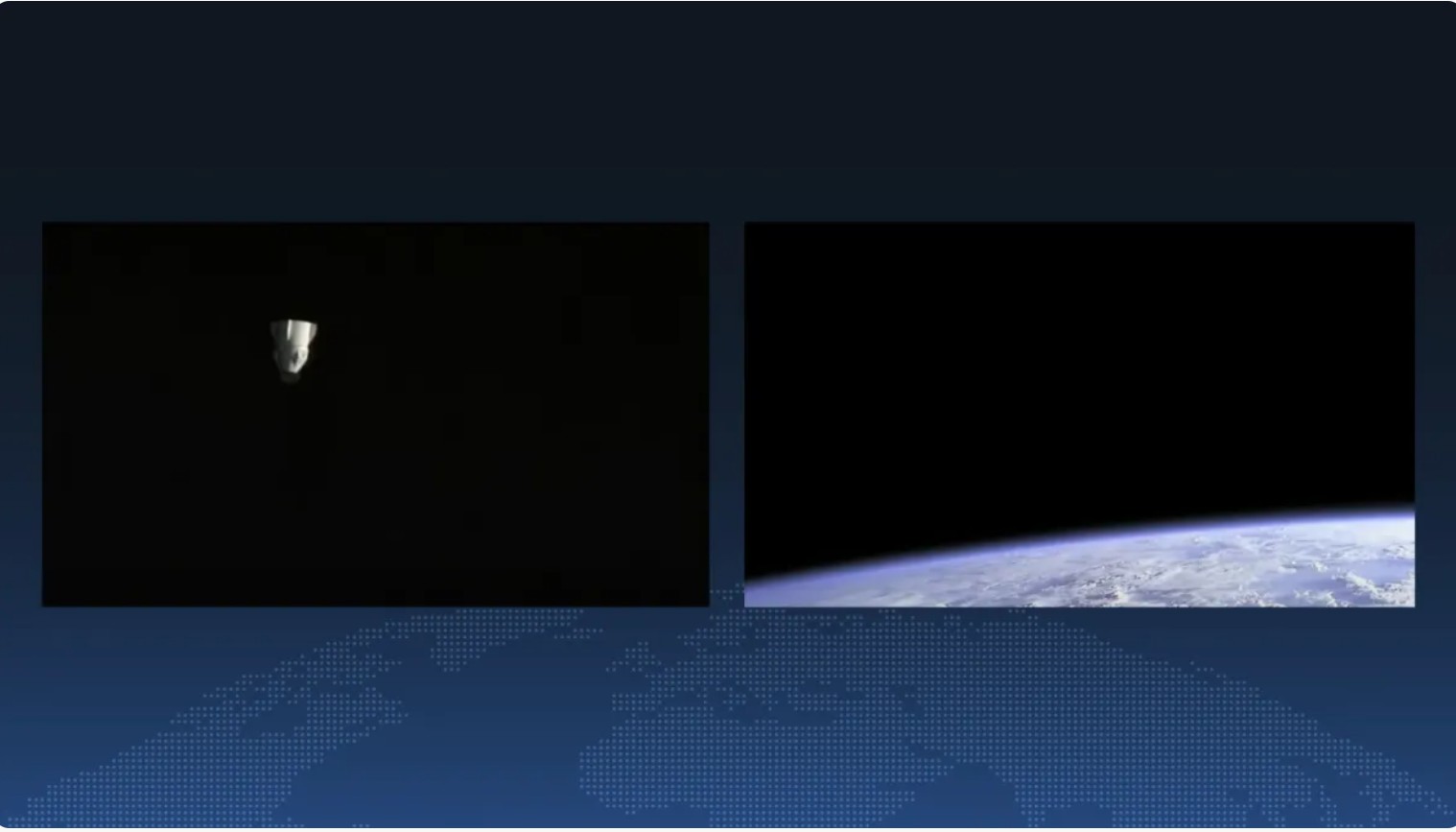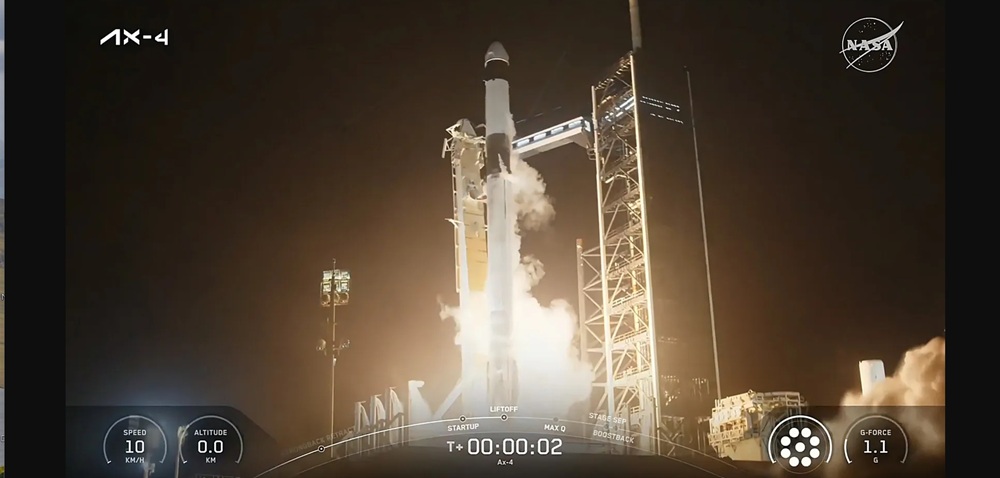NASA’s upcoming Axiom Mission 4 (Ax-4) has been rescheduled again to June 22. Earlier, the launch was slated for June 11, 2025 and then to June 19 from Kennedy Space Center, Florida.
This mission is set to bring cutting-edge wearable technology and groundbreaking medical research to the International Space Station (ISS). This mission not only advances human spaceflight capabilities but also pioneers efforts to make space travel accessible to people with conditions like insulin-dependent diabetes, a group historically excluded from space missions.

The Ax-4 mission will mark the return of human spaceflight for India, Poland, and Hungary, each undertaking their first government-sponsored flight in over 40 years. Although this mission represents only the second human spaceflight in the history of these nations, it will be the inaugural occasion for all three to carry out a mission aboard the International Space Station. This landmark mission highlights how Axiom Space is transforming access to low-Earth orbit and advancing national space programs worldwide.
The Ax-4 mission will be commanded by Peggy Whitson, a former NASA astronaut and director of human spaceflight at Axiom Space. The crew includes pilot Shubhanshu Shukla from the Indian Space Research Organisation (ISRO), marking a significant milestone as part of a collaboration between NASA and ISRO. The mission also features two European Space Agency (ESA) astronauts: Sławosz Uznański-Wiśniewski from Poland and Tibor Kapu from Hungary, making this the first ISS mission to include astronauts from these countries.
The crew will travel aboard a new SpaceX Dragon spacecraft, launched by a Falcon 9 rocket, with a targeted docking time at the ISS around 12:30 p.m. on June 11. The astronauts will spend approximately two weeks conducting scientific, educational, and commercial activities aboard the orbiting laboratory before returning to Earth.
Wearable Technology to Monitor Astronauts’ Sleep Quality
One of the most innovative aspects of Ax-4 is the deployment of a new wearable technology designed to monitor astronauts’ sleep quality in real time. Sponsored by the ISS National Laboratory and developed through a collaboration between Booz Allen, Axiom Space, and Oura, this technology demonstration will test a wearable device capable of collecting detailed biometric data such as total sleep time and heart rate variability during sleep.
This wearable device, similar in form to the Oura Ring, will utilize edge computing technology to process and analyze sleep data directly on the ISS, allowing astronauts to receive immediate feedback on their sleep quality without relying on communication with Earth. This near real-time data processing is crucial for enabling astronauts to make informed decisions about their readiness for critical tasks, especially during long-duration missions where communication delays with ground control become significant.
Josh Arceneaux, director of human space flight at Booz Allen, emphasized the importance of this technology: “This technology will provide crew members with detailed insights into their sleep quality and biometrics, which will help them to understand how this directly impacts their fitness and ability to best execute their duties the next day.” The demonstration aims to empower astronauts to operate more autonomously by eliminating the need for constant ground communication for health monitoring, a capability that will be vital for future missions to Mars and beyond.
Breaking Barriers: Diabetes Management in Space
Alongside wearable tech, Ax-4 is also pioneering research that could open the door for astronauts with insulin-dependent diabetes to travel to space. Historically, individuals with diabetes have been excluded from space missions due to the challenges of managing blood glucose levels in microgravity. However, the Suite Ride project, a partnership between Axiom Space and Burjeel Holdings PLC from the United Arab Emirates, aims to change that.
The study will test the accuracy and reliability of commercially available Continuous Glucose Monitors (CGMs) in the microgravity environment of the ISS. One or more astronauts on the mission will wear these CGMs throughout their two-week stay, with their real-time blood sugar data monitored by researchers on Earth. This will be complemented by blood samples collected during the mission to validate the CGM readings.
Additionally, the mission will carry two types of insulin pens—one refrigerated and one stored at ambient temperature—to assess whether insulin maintains its integrity and effectiveness in space. Previous research has demonstrated that insulin pens can deliver accurate doses in microgravity, but this mission will provide a more comprehensive evaluation of insulin viability under these conditions.
Alex Rubin, medical operations group lead at Axiom Space, explained the significance: “A main objective of the study is to demonstrate that a condition such as this can be accurately monitored and treated in microgravity, with the intent of eventually flying a crew member with the condition.” This research not only has implications for expanding the pool of potential astronauts but also offers potential benefits for diabetes management on Earth, especially in remote or austere environments where telemedicine could be enhanced by technologies proven in space.
Mohammad Fityan, clinical lead for the Suite Ride project, highlighted the broader impact: “If we demonstrate that we can share data between a subject’s glucose monitor in orbit and a physician on the ground in near real time, that could be implemented in a telemedicine setting with a clinician serving remote or austere locations on Earth. If it can work in space, it could work on an oil rig, for example.” This research could thus transform diabetes care in challenging terrestrial environments as well as in space.
The integration of wearable biometric technology and diabetes research aboard Ax-4 represents a significant step forward in human spaceflight. By enabling astronauts to monitor their physiological status autonomously and addressing medical conditions previously considered incompatible with space travel, this mission paves the way for more inclusive and longer-duration missions.
The edge computing approach to biometric data processing could revolutionize how astronauts manage their health in space, reducing dependence on Earth-based support and enhancing crew safety. Meanwhile, the diabetes study challenges long-standing barriers and could lead to the first insulin-dependent astronaut in orbit, expanding the diversity of future space crews.
Moreover, the benefits of these investigations extend beyond space. Insights gained from sleep monitoring technology and diabetes management in microgravity could improve healthcare delivery on Earth, particularly in remote or resource-limited settings. Telemedicine applications inspired by space research may enhance chronic disease management and emergency care worldwide.
As the countdown to launch approaches, Axiom Mission 4 stands at the forefront of merging wearable technology with medical innovation in space. The mission’s dual focus on advancing astronaut health monitoring and enabling diabetes management in orbit exemplifies the evolving landscape of human space exploration—one that is increasingly inclusive, autonomous, and connected to improving life on Earth.
The launch on June June 11, 2025 5:55 am, will not only mark another milestone in commercial spaceflight but also set the stage for future missions where technology and medicine converge to push the boundaries of what is possible both in space and at home





